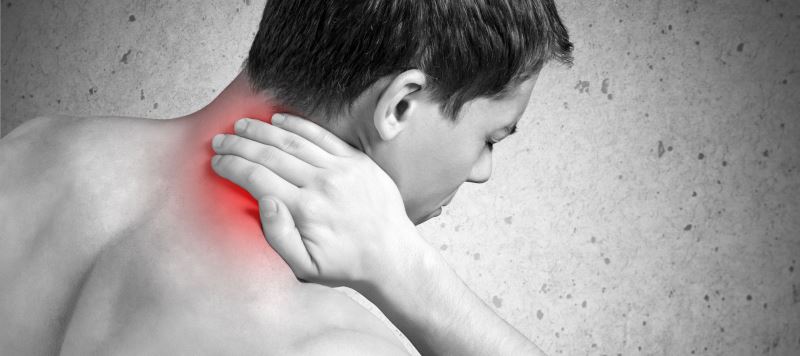Cervical Spine Sprains – Causes & Treatments
Category: Spine | Author: Stefano Sinicropi

Back injuries can be annoying, but cervical spine sprains are a literal pain in the neck. These injuries occur more often than your think, as they are the most common cause of pain in the neck region. Today, we take a closer look at why cervical spine sprains develop, and we explain how they are treated.
Understanding Neck Sprains
The reason sprains are the most common cause of neck pain is because it doesn’t take all that much to injure the soft tissues in your neck, and as a population, we generally don’t have very proper neck posture throughout our daily lives. For example, the advent of the smartphone has led people to be hunched over staring at screens while they ride the bus, walk through the park or in between classes. Craning your neck at awkward angles forces it to handle the stress from the weight of your head, which can easily lead to injuries to the tissues in the cervical spine region.
Outside of posture control, another common injury that leads to neck sprains is whiplash. Whiplash is caused by the sudden forward or backward motion of your head, and this is very common in rear-end car accidents. Whiplash can also occur during sports, and this jarring motion can affect the ligaments in the neck. It’s important to note that although the words sprain and strain are often used interchangeably, but a sprain affects ligaments, while a strain affects muscles and tendons in the area.
Symptoms Of Cervical Neck Sprains
Cervical spine sprains are often caused by whiplash from traumatic head movement or through poor posture awareness, but what kind of symptoms might someone with a neck sprain experience? The most common symptoms include:
- Sharp regionalized pain
- Neck stiffness
- Limited range of motion
- Swelling
- Headache
- Neck spasms
- Dizziness
- A burning sensation
- Shoulder discomfort
Diagnosis and Treatment
Diagnosing a cervical spinal sprain is best done with the assistance of a spine care professional. If you walked into Dr. Sinicropi’s office and a neck sprain was suspected, he would conduct a physical exam of the neck and he’d ask you a range of questions about when pain developed and what symptoms you’re experiencing. A doctor may provide you with a diagnosis without the assistance of imaging techniques, but if you are experiencing more severe symptoms like muscle weakness, numbness or a tingling sensation in your extremities, than an X-ray or MRI might be ordered to get to the bottom of the issue.
Once you’ve been diagnosed with a cervical spine sprain, your doctor will walk you through your treatment options. The most common treatment options will include pain medications or medications to control neck spasms. You’ll also likely be prescribed rest and limited neck movement for a few days, and that may be aided with the assistance of a soft cervical collar brace if the doctor feels it necessary.
After a couple of days of rest, you’ll likely be ordered to begin physical therapy. Therapy is designed to strengthen the injured ligament to get it back to a pre-injured state. Physical therapy will be your best bet to recover from a cervical spine sprain, but you may also be asked to do some other treatment techniques as well, like posture control awareness, heat or ice packs or massage therapy.
If you are experiencing any of the above symptoms, or you simply want to get to the bottom of your spine pain, reach out to Dr. Sinicropi’s clinic today!